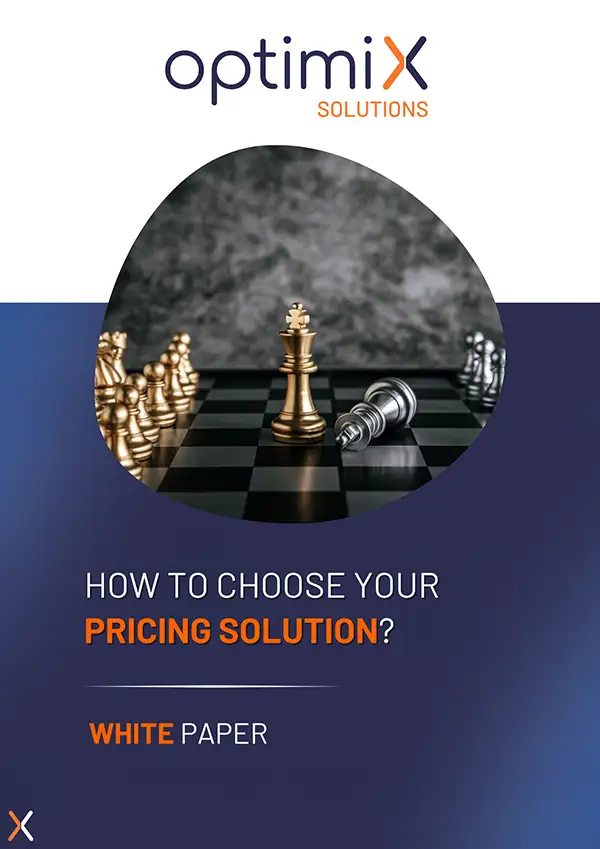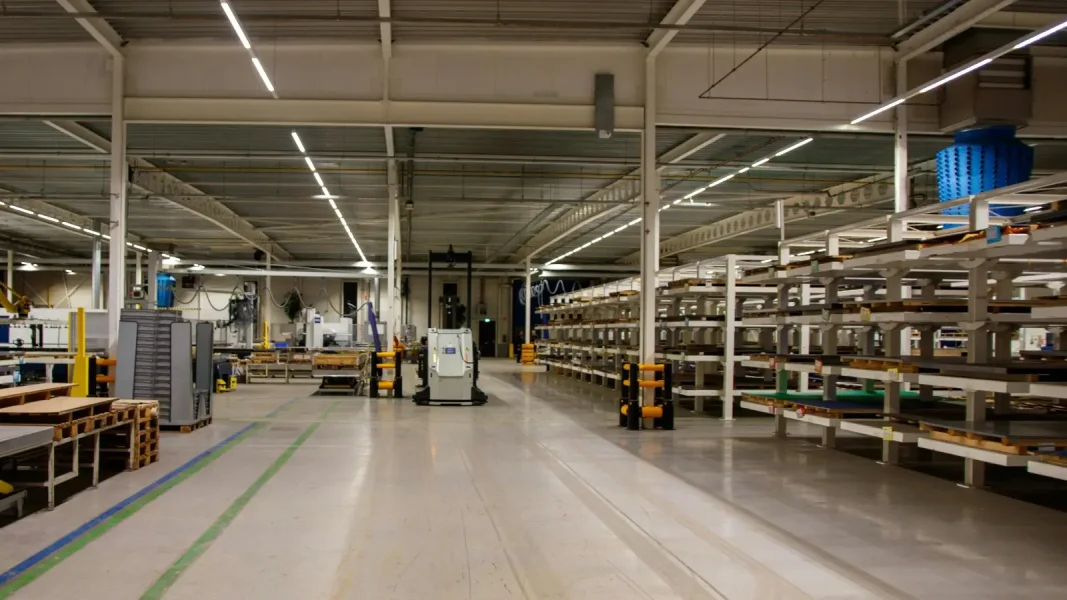It’s no secret that in retail, price is a key factor in differentiation and competitiveness. Retailers and pure players pay particular attention to the design of their pricing strategies.
To deploy a coherent strategy vis-à-vis the market, it’s imperative to base your thinking on up-to-date data from your point of sale. But also from competitor stores, prices charged, promotions, products available, ranges deployed, etc.
Whatever the source, this data forms the basis of a competitive pricing strategy.
- How can we optimize data collection to use only the most relevant data possible?
- How can we use the most up-to-date offline data to match the responsiveness of the web?
To meet this challenge, Optimix has developed two ergonomic, fully customizable and results-oriented solutions:
- The Data Collect module: a tool for capturing data from competing websites
- The Scan In Store module.
In this article, we focus on competitor price recording and point-of-sale data collection , using the Scan In Store module.
Scan In Store: optimize your competitors' on- and off-line price quotes
Although external service providers offer in-store data collection services, these operations are often of limited interest. This applies to products with high competitive potential and/or frequently fluctuating prices.
The delay in transmitting the results of a data collection campaign carried out by an external service provider is an obstacle to therapid integration of sensitive data into your pricing strategy.
To remain competitive in the face of regularly changing competitive prices, you need to be responsive and flexible.
It is impossible to establish a pricing strategy in line with the latest market updates.
The emergence of digital technology and pure players has reinforced this requirement, and dictated a new level of reactivity to the market: that of real time.
Who’s to say that your competitor hasn’t changed the price of a product with high competitive potential two days, one day or three hours after you last collected data?
Are your pricing operations still relevant?
Scan In Store provides a calibrated response to these issues, enabling you to manage data collection in the best possible way: responsiveness, recurrence and reliability are the key words.
Would you like your users to check the prices of your competitors’ leading products every morning?
All you need is a smartphone.
Scan In Store: organize competitor price surveys and regular, targeted data collection
An accessible, ergonomic application
Scan In Store is a mobile application dedicated to in-store price recording.
Once installed on a smartphone, it enables store teams to record product data at the point of sale: labels, prices, barcodes and photographs.
To begin with, the head office defines the scope of data collection:
- Target store(s),
- Statement date,
- The person in charge,
- Products concerned.
The user in charge of carrying out the survey receives a mission order in his application, summarizing all this information.
He then goes to the point of sale to photograph the labels and products with his smartphone.
He imports them directly into Scan In Store.
Once this stage is complete, the software takes over.
Scan In Store’s artificial intelligence extracts key elements from the photographed labels:
- Product name,
- Bottom shelf price,
- Bar code.
It adds these elements to the existing database and presents them to the operator in the form of analysis tables for easy reading and understanding.
The user consults this data via the Scan In Store interface, deployed on smartphones, tablets and PCs.
An application for product matching and price comparison
Aware of the stakes involved in data collection, product matching, pricing strategy, range consistency, etc.
Optimix has developed an application adapted to the diversity of needs justifying data collection.
To this end, three competitor price survey operations and the data collection system can be parameterized.
Scan In Store: competitor pricing and in-store data collection on products already matched
The Scan In store module updates targeted product prices in real time, in line with your needs and competitive perimeter.
It responds to a strategic need: to have an up-to-date price survey to adopt a relevant price positioning.
Let’s illustrate how it works with a concrete example:
The company’s store wants to improve the price positioning of products sold in the aperitif section.
To achieve this, the head office defines a list of branded products in Scan In Store, both national and own-brand: potato chips, olives, pretzels, etc.
These products have already been chained, so all that remains to be done is to update the competing prices.
Armed with his smartphone, the user visits the competitor’s store and collects the data.
For each product, the application automatically detects the existing match and updates the price of the competing product in real time.
The data collected at any given moment is directly integrated into Scan In Store’s analysis tables, and may also be integrated into the Optimix Pricing Analytics application suite, described in greater detail here.
Thanks to this interconnection of Optimix modules, you can monitor and integrate your competitors’ prices into your pricing strategy in real time.
The only prerequisite for this method is that your products have already been matched with those of your competitors.
This chaining operation is strategic, since it is impossible to compare brand and competitor products without it.
The Scan In Store module provides two types of operation dedicated to chaining, as described below:
- Make sure your matching is effective,
- Reliable,
- Just what you need.
Collect, Scan and Match: competitor price surveys and data collection on a closed product list
This type of operation involves collecting data to match products directly in the competitor’s store.
It relies on the intervention of a user who visits the competitor’s store.
There, he checks the products available, establishes links between products and carries out the chaining process on the spot.
Let’s go back to our example.
In order to improve the competitiveness of its appetizer department, the company wanted to collect data from a competitor’s outlet:
- Products available identical or comparable to those of the brand,
- Price list,
- Labels,
- Bar code.
To do this, the head office selects products in Scan In Store for which chaining is not yet available.
If these products are not yet listed in the application, data must first be collected in the store to update the database.
The user then goes to the competitor’s store.
His aim is to match the products in the competitor’s aperitif section with those in the store.
To optimize the process and make it more reliable, the application provides the user with photographs of the chain’s products, along with their labels, barcodes and prices.
When he matches two products, he photographs the competing product and its label.
It then validates the match between the two products directly on the shelf, and imports the competing data into Scan In Store :
- Price list,
- Bar code,
- Wording,
- Photographs
Walk, Scan and Match: on-the-fly data collection and chaining
The latter type of operation is also designed to establish a product match.
However, the scanning process differs.
The user has no predefined target products to scan.
When they visit a competitor’s outlet, they will pick up references on the fly, without any particular focus on specific products.
The matching operation will only take place afterwards, after in-store collection. Once the collected data has been imported into the application, an operator establishes and validates product matches from the interface.
This type of collection has the advantage of limiting the time spent in the competitor’s store, and allowing you to add to your database according to your teams’ availability.
In both matching operations, product photographs act as a safeguard.
They allow us to verify the data collected and the matching established. This ensures that the database is 100% reliable and usable.
To further optimize its operation and better meet the needs of the retail field, Optimix has equipped Scan In Store with high-performance artificial intelligence, complemented by human intelligence.
Optimizing your performance through Artificial Intelligence and machine learning
Scan In Store’s artificial intelligence comes into play on several levels.
It can be found, for example, in the reading and extraction of label data, as well as in the automatic matching of products.
To guarantee the application’s efficiency,this artificial intelligence works on the principle of Machine Learning.
To understand what this means, let’s take an example: the software misinterprets the data from a label, indicating a price of €0.59 instead of €5.90.
However, as we have seen, operators can rectify erroneous information from the Scan In Store interface.
All they have to do is look at the user’s photographs of the label and product, and check that the software has extracted the correct information.
In our case, the operator detects the pricing error, corrects it and validates the product sheet.
Machine learning process
This process of correcting and validating information is essential for two reasons.
Firstly, through the intervention of human intelligence, it enables us to aggregate and verify the data that will subsequently be used to control external chaining, and to make the holding rate relevant.
This verification can take place at every stage of the process and at all hierarchical levels.
Once again, this is where photographs come into their own: no room for doubt or error in your analysis tables.
Secondly, by the very nature of the Machine Learning principle.
In concrete terms, this means that the more data the application obtains to process – scans, corrections, etc.
the more efficient its information processing will be.
Artificial intelligence thus improves its ability to decipher labels and extract relevant information.
It is thus able to interpret label models to refine its reading and gain in performance.
This combined intelligence optimizes the data collection process at every level.
Data collect, the key to your competitiveness
The advent of the digital age has shaken up the traditional codes of competitive intelligence.
New technologies make it easier to collect data, whether on competitor websites or directly at the point of sale.
A fundamental component of your competitiveness, the use of collected data enables you to adjust your positioning and pricing strategy.
This increases sales, margins, price positioning and market share.
With Scan In Store, Optimix offers an ergonomic, real-time data collection solution tailored to the challenges of price reactivity.
Scan In Store optimizes the organization of resources required for price capture, both in terms of time and personnel.
Organized in conjunction with the other Optimix modules, it enables you to place your data collection in an environment dedicated to your price competitiveness.
We invite you to contact us for more information or a demonstration.





